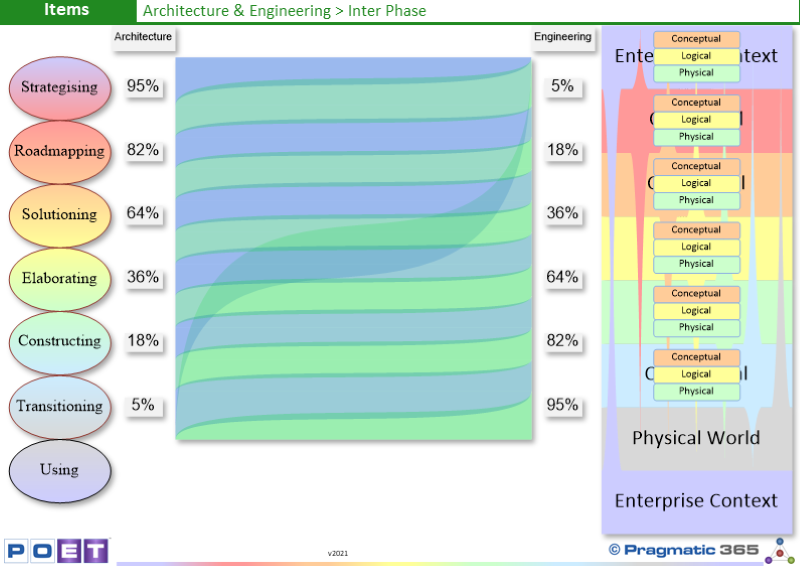https://www.pragmatic365.org/display-show.asp?Showname=BOOKF-PEAF4TOGAF&ComponentNo=000329
Does your Enterprise recognise that people working towards the top of the Transformation stack are more Architects than Engineers?
Does your Enterprise recognise that people working towards the bottom of the Transformation stack are more Engineers than Architects?
If not, does this create any problems?
Does this create any opportunities for education?
Considering each phase of Transformation, do people who work there think of themselves primarily as Architects or Engineers or a mixture?
Which phase of Transformation do you primarily work in?
Do you consider yourself to be primarily an Architect or Engineer or a mixture?
Are the Architecture and Engineering disciplines recognised in your Enterprise?
Are they working in harmony or not?
If not, what will you do to increase the harmony?
https://www.pragmatic365.org/display-show.asp?Showname=BOOKF-PEAF4TOGAF&ComponentNo=000329
FREE EA Training at www.PEAF.com/Training
FREE EA Books at www.PEAF.com/Books
#PEAF #PragmaticEA #EntArch #enterprisearchitecture #BizArch #Change #Innovation #BusinessModel #CEO #Strategy #TOGAF #ITgovernance #agileculture #agile #agileleadership #agilemethodology #itstrategy #ceos
Architecture is performed largely in the early phases of Transformation, while Engineering is performed largely in the later phases.
https://www.pragmatic365.org/display-show.asp?Showname=BOOKF-PEAF4TOGAF&ComponentNo=000329

From the perspective of the entire Transformation Capability,
Architecture is performed more at the top of the stack and less at the bottom.
Conversely Engineering is performed more at the bottom of the stack and less at
the top.
The further down the stack we go the more concrete things
become, and the further up the stack we go, the more abstract things become.
This does not mean we are saying that there is no Engineering happening at the
top and there is no Architecture happening at the bottom. ...to read more, please Login or Register |
Keypoint |
Adopt this component by... |
Architecture is performed largely in the early phases of Transformation, while Engineering is performed largely in the later phases.
|
C-Suite: Instigate training so that people recognise that Architecture is performed largely in the early phases of Transformation, while Engineering is performed largely in the later phases.
C-Suite: Instigate training so that people recognise that Architecture and Engineering are skills that can be applied anywhere.
|
Questions to ponder... |
Does your Enterprise recognise that people working towards the top of the Transformation stack are more Architects than Engineers? |
Does your Enterprise recognise that people working towards the bottom of the Transformation stack are more Engineers than Architects? |
If not, does this create any problems? |
Does this create any opportunities for education? |
Considering each phase of Transformation, do people who work there think of themselves primarily as Architects or Engineers or a mixture? |
Which phase of Transformation do you primarily work in? |
Do you consider yourself to be primarily an Architect or Engineer or a mixture? |
Are the Architecture and Engineering disciplines recognised in your Enterprise? |
Are they working in harmony or not? |
If not, what will you do to increase the harmony? |